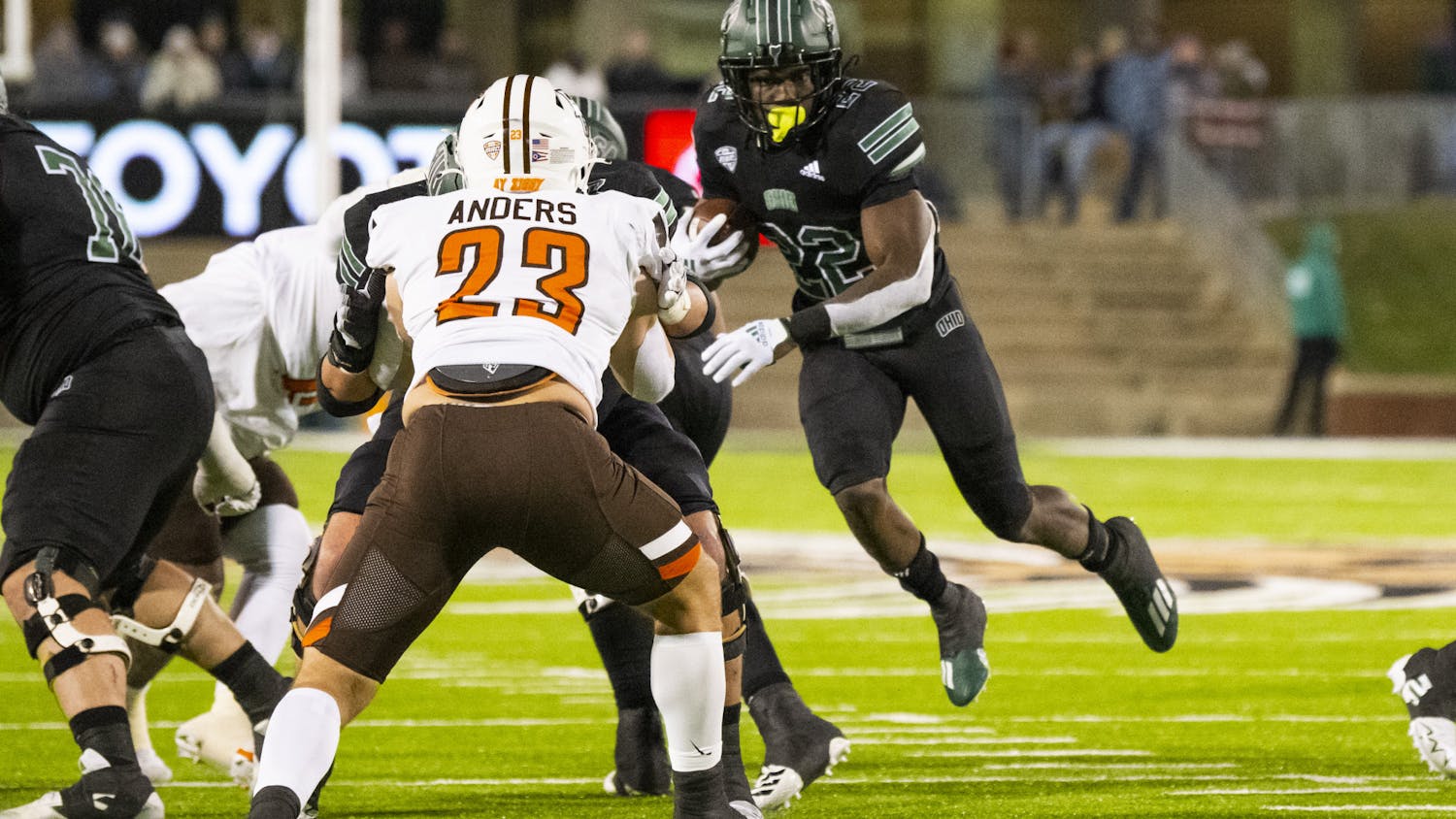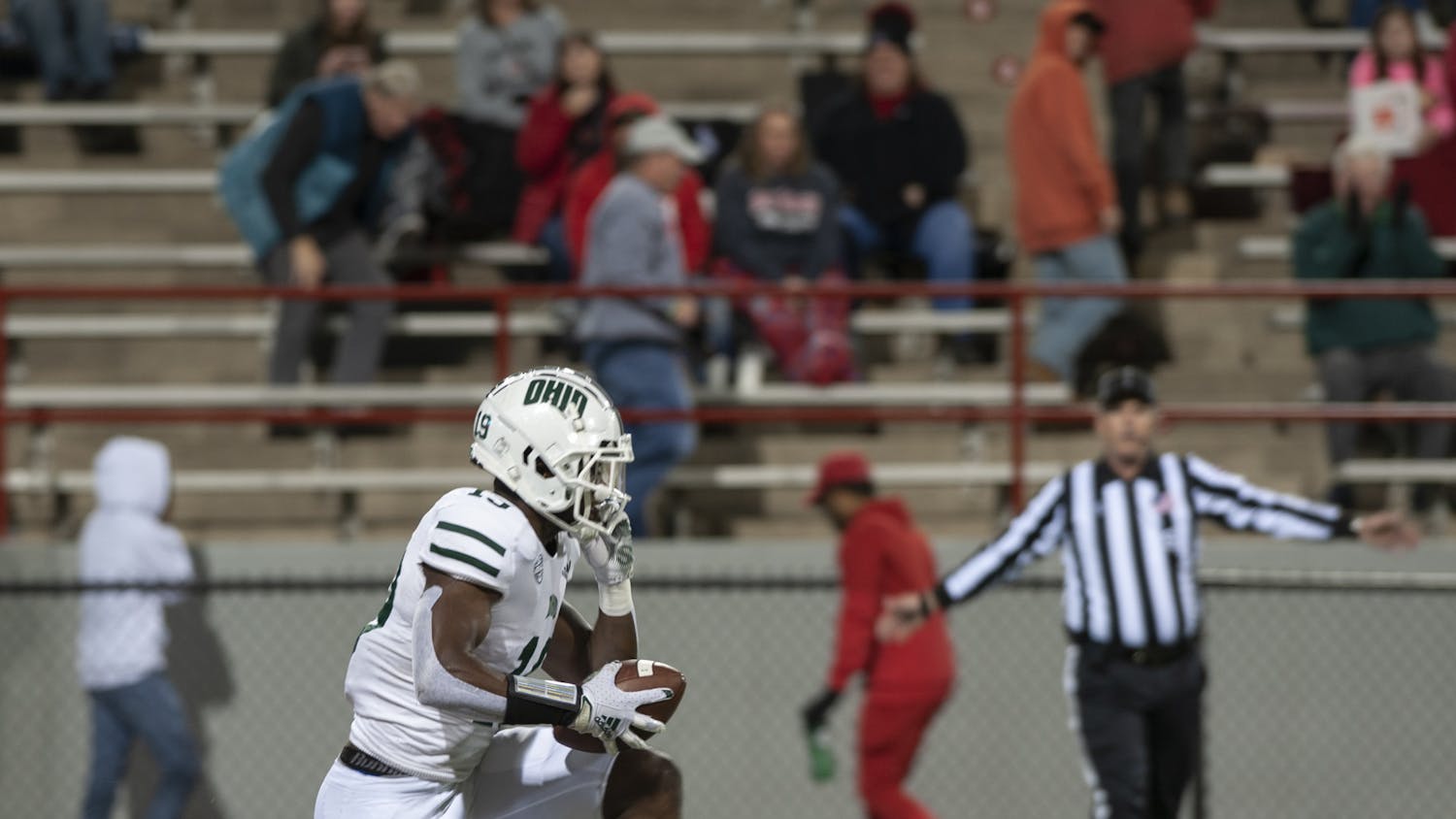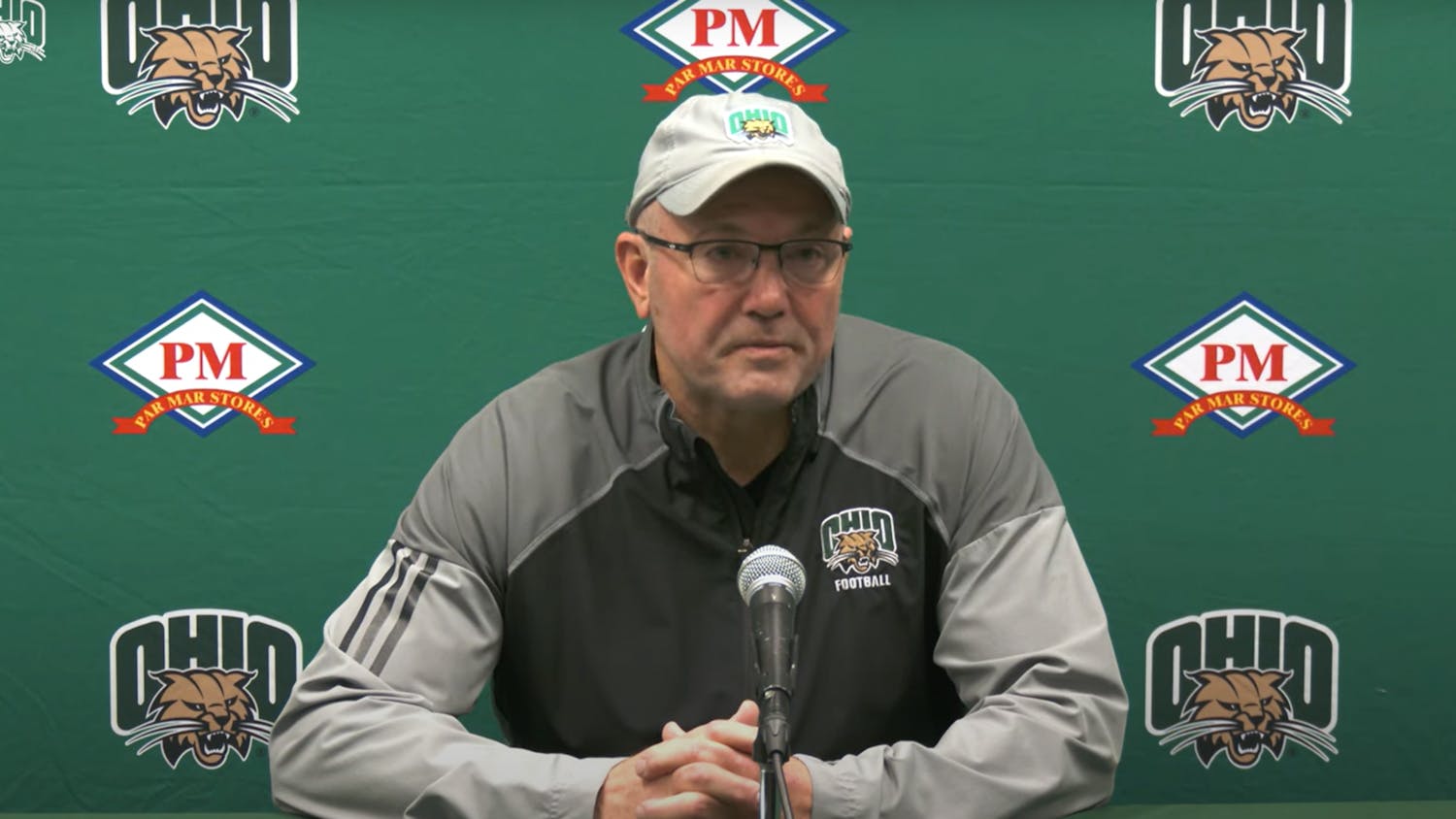After quarterback Kurtis Rourke went down with a season-ending injury on Nov.15, no one really knew what Ohio’s high-powered offense would look like with backup C.J. Harris under center.
It would have been easy to think that Ohio wouldn’t keep up its offensive production with Harris starting, but in the final game of the season, against Bowling Green, those concerns seemed unfounded.
The Bobcats put up 38 points in that game and after going for negative yardage on their first two drives, the offense looked excellent.
They weren’t as reliant on the deep passing game, and Harris ran more than Rourke, but they were still able to move the ball and put points on the board against a defense that led the conference in sacks.
The win over Bowling Green earned Ohio a spot in the Mid-American Conference Championship game, and going into the game, there was much less concern about Ohio’s offense.
That turned out to be a mistake.
Ohio’s offense was, outside of one drive in the second quarter, almost completely unable to move the ball. Harris looked overwhelmed, the run game was ineffective and Ohio could not get its talented receivers involved.
The Bobcats had 11 possessions in the MAC Championship game, and only picked up more than 40 yards on one of them. Overall, Ohio averaged just 21.1 yards per drive, and that includes an 84-yard touchdown drive that proved to be the exception, not the rule for Ohio’s offense.
Remove that drive, and Ohio averaged just 14.8 yards per drive, not even enough to pick up two first downs.
The second half was particularly dire for the Bobcats offense, as they gained just 114 yards despite trailing the entire half.
Ohio averaged less than 3.6 yards per play in the second half, which would have ranked last in the MAC this season by an entire yard.
Harris had a rough game Saturday, going 17-for-31 for just 163 yards and an interception, but he still played an important role in Ohio’s trip to the MAC Championship game, and it probably wouldn’t have made it to Detroit without him.
“I’m very proud of him,” Ohio head coach Tim Albin said. “He showed incredible toughness, tried to create with his feet when he could and gave us the best chance to win.”
As is often the case in football, Ohio’s offensive struggles were due in large part to its inability to run the ball. Ohio rushed for just 3.4 yards per play despite running the ball 29 times. To make matters worse, one of those rushing attempts was a 30-yard reverse to Sam Wiglusz in the third quarter, and without that play, Ohio averaged just 2.5 yards per carry.
It was the first time since playing Iowa State in Week 3 that Ohio went for under 100 rushing yards, and the first time since the Western Michigan game that it was held under 150 rushing yards.
Just as it did against Bowling Green, Ohio was always going to have to lean on Sieh Bangura in this game. Unfortunately for Ohio, Bangura had one of his worst games of the season, totalling 20 carries for just 59 yards.
“I definitely would have liked to read my holes better,” Bangura said. “I love my offensive line, and they opened up some stuff, so I probably could have run the ball even harder."
Bangura was put in a tough situation with Toledo knowing how much Ohio was going to rely on him, but he still managed to score the Bobcats only touchdown.
It can be attributed to Rourke’s injury, Toledo’s defense or any number of other factors, but the fact remains that Ohio’s offense let it down in the most important moment of the season.






